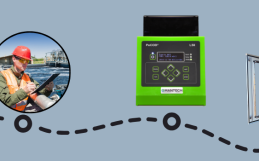Improved Wastewater Treatment & Paper Mill Performance With New COD Monitoring Technology
The Nordic Wood Biorefinery Conference was held in Stockholm, Sweden during March 28-30, 2017. An abstract presentation authored by partners from VTT, Kemira, FPInnovations and MANTECH was presented during the conference. The PeCOD® Analyzer has the ability to enable pulp and paper mills to improve effluent treatment process and to optimize chemical programs, leading to proper chemical dosage (not over or under doses) and lower energy requirements for treatment. The strong correlation between the photoelectrochemical Chemical Oxygen Demand (PeCOD) method and the dichromate method suggests that the PeCOD® Analyzer could be a valuable tool to help both in-mill operation optimization and improved waste water optimization while protecting public health and the environment. Figure 1 demonstrates the PeCOD® Analyzer system configurations utilized during the study.
Download the poster presentation here. Read more about the abstract here.
Introduction
Pulp and paper mills produce a large volume of wastewater and residual sludge, which is a growing concern due to increasing environmental regulations becoming more strict. Experts are looking for solutions to reduce their freshwater intake and ultimately achieve close to zero liquid discharge. The challenges of these solutions include: high organic concentrations in production and wastewater effluent, operation costs, performance and impacts to the environment. Additionally, the push for stricter Chemical Oxygen Demand (COD) effluent discharge regulations suggests a safer, faster and more robust COD monitoring tool is essential for process optimization and discharge compliance.
Since mid-2013, the photoelectrochemical Chemical Oxygen Demand (PeCOD) method has been proven and trusted as a green, safe, fast and accurate alternative to the Dichromate Chemical Oxygen Demand (COD-Cr) method for a kraft Chilean mill. The 15 minute PeCOD results led to a reduction in hypochlorite used for bleaching, with no loss of product quality. This has resulted in lower organics in the waste water plant and further reductions of chemicals and energy used for treatment. The total savings over 12 months netted $3 million (USD), a 3-day return on investment for the PeCOD® Analyzer unit. The strong COD-Cr to PeCOD correlation at the Chilean pulp and paper mill was reinforced with a range of effluents from both kraft and mechanical pulp mills in this project.
*Discontinued L100 model displayed






